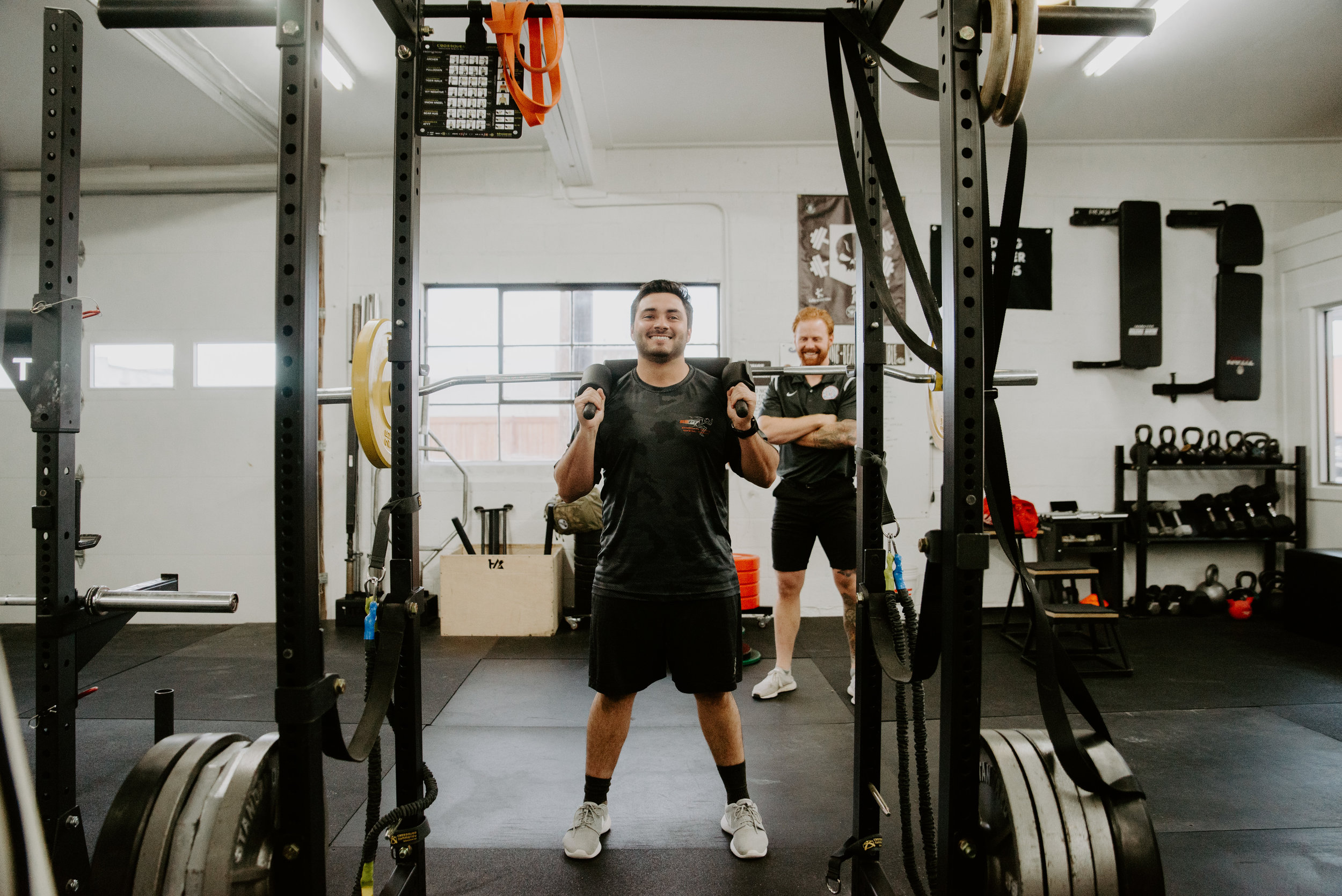Squatting: Should Your Knees Go Over Your Toes?
It’s pretty commonplace to hear that the knees traveling over the toes in the squat is dangerous for the knees and can lead to frequent nagging pain. After looking into what actually happens at the knee joint we were able to debunk this misconception. Healthy athletes can perform the squat to full depth without worrying about hurting their knees given proper training methods.
There are many instances when I have been working with medical professionals and strength coaches and asked the simple question, “how many people here think we should never have our knees go past our toes when squatting?” Typically that question leads to 75% of the room raising their hand, and the next thing that I say is, “you’re all wrong.”
It’s hard to pin down where this myth actually started. However, it has become common place in today’s fitness and medical world. This instruction is even common in different Strength and Conditioning certifications and their guidelines for a proper squat.
For over 5 years I have had the opportunity to watch, compete with, and coach athletes that are some of the best weightlifters in the United States. To successfully lift the most amount of weight an athlete must catch the barbell in the bottom position of the squat with their knees well over their toes. Are they putting their knees in harms-way EVERY time they lift a barbell? If so, how do many of them have relatively no pain in their knees?
Knees Over Toes?
If you really took a deeper look into the cue to limit the knees moving past the toes in the squat you would likely find a handful of well-intentioned strength coaches and physical therapists. Really though this cue is simply a quick fix to a deeper problem!
When an athlete or patient squats poorly they often move from their ankles first! As the ankle moves forward it causes the knee to hinge forward. The center of balance and weight of the body is then shifted forward to the balls of the feet. This type of movement is deemed the “knees first” approach. When someone finds themselves moving this way it leads to greater shear force on their knee joint and contributes to increased risk of injury and most importantly PAIN.
To many coaches and individuals, this issue would at first be attributed to the knee. Those who squat poorly typically are moving their knees forward and do develop pain. Naturally it makes sense that limiting this forward movement would fix the issue. The problem is we are addressing symptoms of larger problems!
The knee is a hinge joint. It will only move forward based on what happens at your hip and ankle. This leads to the conclusion that the issue is actually a balance problem! Instead of focusing on the knee we should really be looking into the hip and ankle when we squat.
If there is an absolute in squatting it would be that our center of balance must remain over the middle of our foot. This allows for the body to remain balanced and efficiently produce strength and power. For example, when we body weight squat our center of balance will actually be right around our belly button. Throw a barbell into this mix and now the center of balance IS that barbell! Our movement is now dictated by how well we can maintain this weight over the middle of the foot throughout the entirety of the squat!
When the knees hinge forward early in the squat the athlete’s center of gravity is shifted forward onto the balls of their feet. It actually has little to do with the knee joint itself and more to do with ensuring the athlete stays balanced. The cue concerning limiting the knees is simply correcting a weight shifting issue.
How To Fix: Sitting Back
One of the best ways we have found to correct moving from the ankles first would be to cue “sit back” or “push the hips back” therefore allowing the athlete to move their hips first rather than their ankles. This activates the POWERHOUSE of our body [the posterior chain]. This cue will also limit any pre-mature forward movement of the knees and the center of gravity to remain over the middle of the foot!
The cue to limit the knees works to a certain point, but in order to reach full depth in the squat the knees must eventually move forward in order to stay balanced. This concept can be hard to understand.
To reach full depth the hips must be pulled UNDER the torso. This allows us to remain balanced and keep our chest upright. As the knee is a hinge joint that moves based on what happens at the hip and ankle, it will be forced to move forward at this point.
It is very normal for athletes/patients to have their knees move forward even past their toes. It all comes down to weight distribution and the ability to maintain our center of gravity over the middle of our foot.
We should be concerned on when the knees move forward past the toes, not if.
What’s My Take Away?
The next time you are watching someone squat, focus on what joint moves first! Moving with the “knees first” approach typically signals someone is a poor mover. An athlete/patient that moves with good technique will move their hips back first.
As long as excessive loading is limited and good technique is used, the knees CAN and MUST move past the toes in the bottom of as squat to allow for the hips to drop fully.
Remember, the knee is only a hinge joint. As long as it is kept stable (in line with the feet) we should not worry about them. Proper squatting is all about moving at the hips first and staying balanced. The rest takes care of itself.
Thanks for reading,
Darren Hansen, BS Exercise Science, CSCS, USAW National Coach, Owner of HansenAthletics


